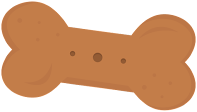This resource is included in the Zoo Animals for EFL. Elementary English Specialist Teacher can find this resource useful. Click here:
https://www.teacherspayteachers.com/Product/Zoo-Animals-Flashcards-for-EFL-3611842
Playing
with the small cards will have the students master the sense of progress. They can
add as many cards with the zoo animals as they wish. These small cards serve as
a visual aid. Easy to associate the zoo animal word to the picture. Use the cards in your
Print and cut the cards that you will
need. There are more than 50 animals to choose from.
Print
the labels for the fries’ containers that you have previuusy gathered. Glue
onto the containers and open them up for the activity.
Sorting
activities are great for language practice, as students need to communicate
their reasoning for why they sorted the zoo animals based on their physical characteristics.
This promotes speaking and listening skills,
as well as vocabulary usage when the students discuss where to put the small
card. Here is an example of long tools and short tail.
Students: The lion has a long tail. The rhino
has a short tail.
Student1:
The gibbon has long arms.
Student
2: the racoon has small arms.
Provide
clear instructions and model the sorting processes.
Teacher:
The rhino has short legs!
The
flamingo has long legs.
Here’s
the sorting into long or short tails.
This resource has more to check, go to this blog post: https://eflelementaryresources.blogspot.com/2024/04/zoo-animals-games.html
Find
all the links to my blogs and social media.




























.png)
.png)
.png)
.png)
.png)















